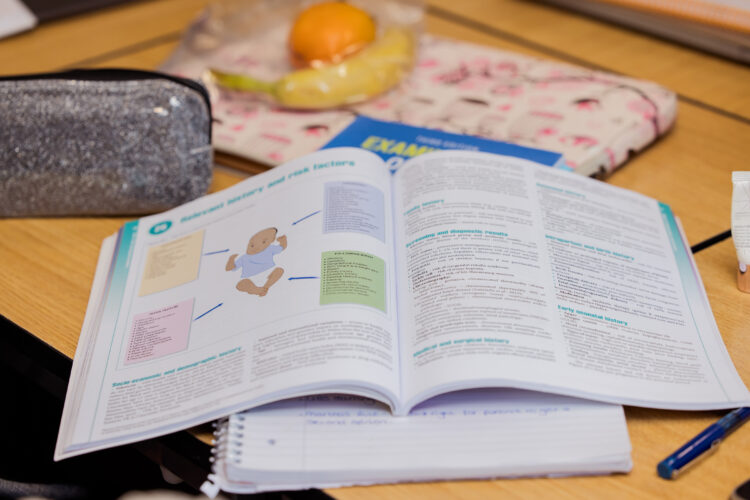Working Together: Strengthening Ties Between Associations and Universities

This is the seventh blog in a series written by the Royal College of Midwives (RCM) on the importance of midwifery associations engaging student midwives. This time, we explore how midwifery associations can work collaboratively with universities and educators to strengthen education, practice, and the profession as a whole.
Midwifery thrives on collaboration and shared learning. Around the world, midwifery associations play a vital role in shaping the profession, promoting quality care, and supporting midwives throughout their careers. Universities, meanwhile, are at the heart of preparing the next generation of practitioners. When these two groups—professional associations and universities—work together, they create powerful partnerships that strengthen education, clinical practice, and professional identity.
Drawing on the experience of the RCM in the UK, this blog shares practical ideas to help your association connect meaningfully with universities and midwifery educators.
Linking Education and Practice
Universities focus on academic preparation, while professional associations uphold standards in practice. Working together ensures that graduates leave university with both strong academic knowledge and professional readiness.
In the UK, every midwifery programme has a Lead Midwife for Education (LME) responsible for ensuring quality and compliance with Nursing and Midwifery Council (NMC) standards. The RCM’s Head of Education is also an LME, allowing the organisation to contribute directly to national discussions through the UK-wide LME Strategic Reference Group.
How associations can apply this:
- Identify senior educators in your country’s universities who lead midwifery programmes.
- Create a regular communication channel (e.g. quarterly meetings or online forums).
- Invite educators to share updates on curricula and placement challenges.
Promoting Consistency in Education
The RCM works closely with a network of LMEs across 62 UK universities to ensure consistent educational standards. This collaboration helps align teaching with professional competencies and national policy.
How associations can apply this:
- Map all midwifery education providers in your region.
- Facilitate regular forums or newsletters to share updates and good practice.
- Develop joint position statements on education priorities or curriculum content.
Strengthening Workforce Planning
Like many countries, the UK faces workforce pressures. To respond, the RCM gathers data from universities through Freedom of Information (FOI) requests. These findings, published in the State of Midwifery Education Report, highlight issues such as student-to-lecturer ratios and lecturer shortages—evidence the RCM uses to campaign for investment.
How associations can apply this:
- Collect data from universities about student numbers, staffing, and resources.
- Publish short summaries or reports to support your advocacy efforts.
- Use this evidence to speak with government departments or health ministries about funding and workforce development.
Engaging and Inspiring Students
Students are the future of the profession. The RCM regularly visits universities to connect with students, helping them feel part of a wider professional community from the start.
How associations can apply this:
- Offer student membership options with clear benefits (e.g. mentoring, career advice).
- Arrange talks, Q&A sessions, or webinars featuring practising midwives.
- Encourage students to take part in association events or committees.
Building Advocacy Strength Through Partnerships
In the UK, the RCM partners with the University and College Union (UCU), which represents lecturers, to campaign jointly on workforce and education issues. Through this, midwifery gains a stronger voice within wider higher education networks like the Council of Deans for Healthcare.
How associations can apply this:
- Identify potential allies such as lecturers’ unions, nursing associations, or education councils.
- Develop joint campaigns addressing shared concerns such as pay, workload, or education quality.
- Share your association’s evidence and experiences to influence national policy together.
Practical Ways to Build Partnerships with Universities
Here are some simple, effective actions your association can start with:
- Guest lectures and workshops: Offer sessions where practising midwives share real-world insights.
- Joint research and surveys: Collaborate on studies that can inform advocacy or education reform.
- Mentorship links: Pair students with experienced midwives to bridge theory and practice.
- Joint events: Host conferences, seminars, or online discussions that include students, educators, and practitioners.
- Policy partnerships: Combine academic research with your association’s advocacy voice to influence change.
Collaboration between midwifery associations and universities drives progress in both education and practice. All midwives begin their journey as students, and midwifery educators play a crucial role in ensuring they are ready to enter the profession. Listening to and representing the voices of educators is essential to avoid underinvestment in the future of midwifery.
By building strong partnerships with universities, midwifery associations can enhance education, strengthen advocacy, and prepare the profession for the future.
Follow the Royal College of Midwives on Instagram, Facebook, LinkedIn, and Bluesky to see more examples of engagement in action.
The world needs One Million More Midwives
Sign the petition and help us collect one million signatures to demand one million more midwives — and the investments needed to make it happen.
